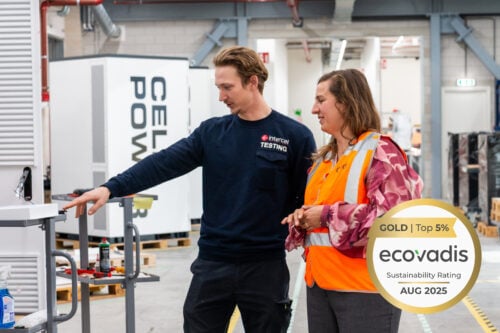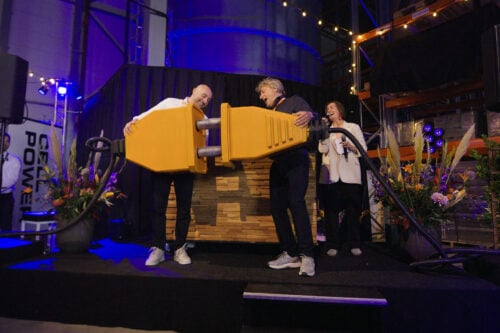Roel Willemsen has been working in various positions at Intercel Energy Solutions for nearly 7 years, and he is more than happy to do so! In his current role as a sales consultant, he specializes in electrification projects and energy storage systems, working in a dynamic market where he can fully express his passion for technology in combination with the optimal process.
What is your passion, Roel?
“I am interested in the inner workings of technology and the associated processes and look for smarter ways to improve these. Smart can be very diverse: more beautiful, smaller, smarter, more sustainable or faster. Understanding this and offering the best option, is what I enjoy. Whether a customer has a small or complex question, my passion and interest in sustainable technology and processes allows me to express myself every day.”
Sustainable?
“To me sustainability is very concrete, ensuring that a solution works properly and for a long time. With the right selection of batteries and accessories, everything should be easy to build and easy to reuse. In short: getting the best out of every solution. Sometimes this may also lead to a ‘no’, if something is not (yet) possible, then it is not (yet) possible. Sustainable relationships are essential to me and this always requires an honest answer.”
Lead Carbon vs. Lithium. Could you provide more details?
There are several similarities between the two. They can easily be used interchangeably, however, they do have different product characteristics. A lithium battery is compact and easy to move; whereas, Lead Carbon batteries have been the standard for large backup systems, such as data centers and hospitals, for many years.
What are the advantages of Lead Carbon?
Lead Carbon is a further development of the traditional lead-acid battery. Lead Carbon is 99% recyclable, so very sustainable. Lead Carbon also approaches the number of cycles of a lithium battery and offers a safe and reliable energy solution. This battery is relatively more affordable per kWh and can be used in a stationary or semi-stationary setup.
And Lithium’s?
Lithium batteries are compact, have a high energy density and, in combination with our building philosophy, are exceptionally portable. Lithium batteries can be utilized in stationary, semi-stationary and portable energy solutions. And the number of cycles is extremely high, 5000 cycles at 80% discharge (D.o.D.).
When do you recommend Lithium or Lead Carbon?
Depending on the situation, either can be the right choice. The customer’s demands and requirements dictate what is advised. A number of important variables to take into consideration are: desired amount of energy, available space, speed of charging and discharging, vibrations, extreme temperatures, degree of portability, and investment capacity. We design and build the complete configurations based on the demands and requirements of the customer. Anyone with business applications within the chain can add value or offer a complete solution. Electrification from 15 kWh and energy storage approximately from 60 kWh to multiples of 2 MWh!
Do you have any final tips?
Do not rule out options based on your preconceived beliefs. Get a comprehensive overview by talking to account managers and technicians. The right solution can be surprising and closer than you think.




